If you’re a fan of the classic TV show “Little House on the Prairie,” then you’ll be thrilled to know where it was filmed! This article will provide everything you need to plan your own Little House-inspired adventure, including tips on when to visit for optimal weather and wildlife sightings. Get ready to step back in time and experience Laura Ingalls Wilder’s world like never before. So pack your bags, grab your bonnet, and let’s hit the prairie!
About the Show
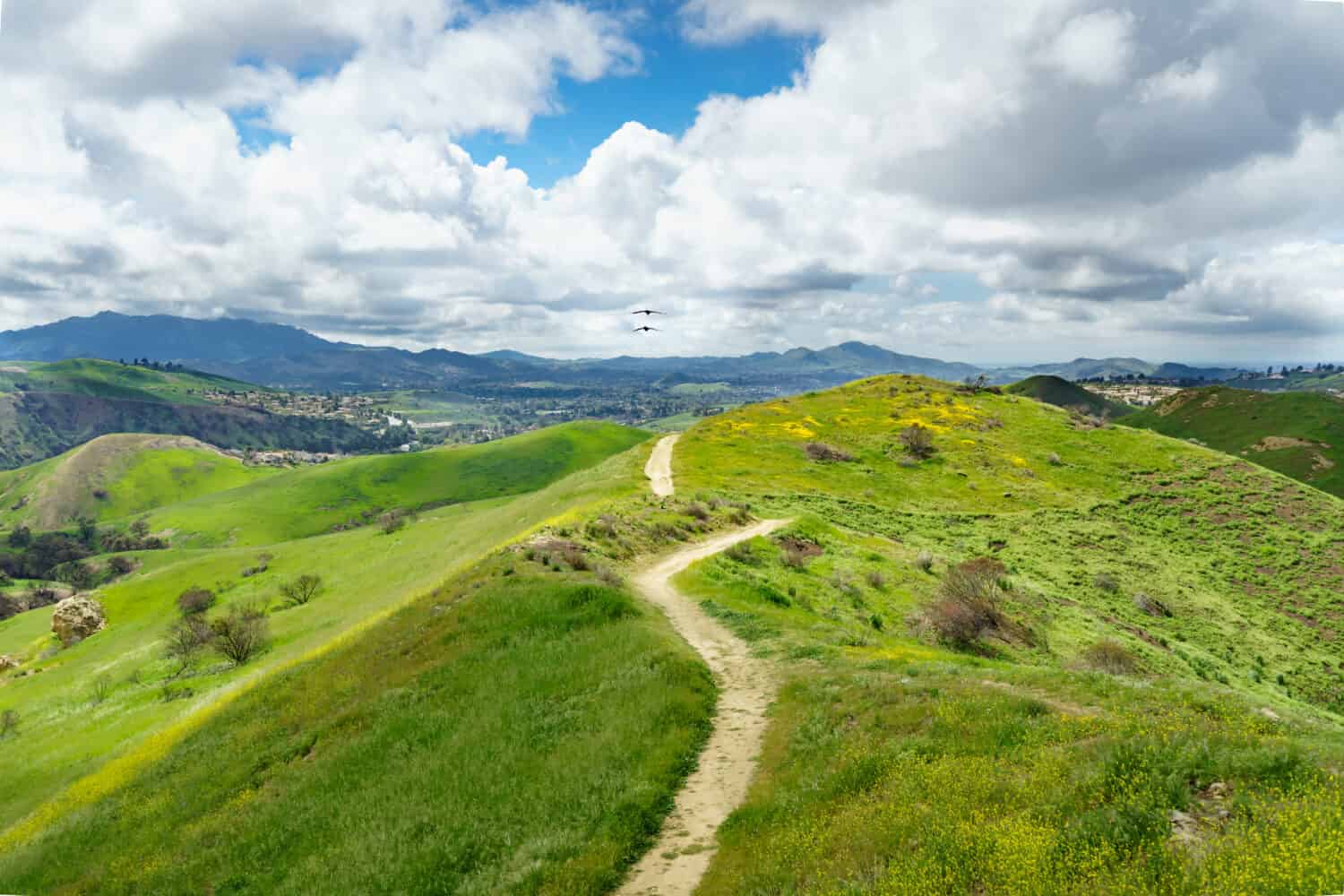
Little House on the Prairie was not filmed in Minnesota.
©Robert Patton/Shutterstock.com
Little House on the Prairie is a beloved American television drama series that aired from 1974 to 1983. The show was based on the autobiographical book series by Laura Ingalls Wilder, which chronicled her pioneer family’s life in the late 1800s as they settled in various locations across the Midwest United States.
The show follows the Ingalls family, led by father Charles and mother Caroline, as they navigate through life’s challenges while living in Walnut Grove, Minnesota. The family faces everything from financial struggles to natural disasters but always manages to pull through with love and perseverance.
The show became an instant hit due to its heartwarming storylines and relatable characters, including Laura (played by Melissa Gilbert), who serves as both protagonist and narrator of many episodes.
In addition to its engaging storytelling, Little House on the Prairie also provides viewers with a glimpse into pioneer life during America’s westward expansion era. This includes depictions of farming practices, hunting techniques, and schooling methods for children at that time period.
Overall, Little House on the Prairie remains a timeless classic that has captured audiences’ hearts for decades.
Where Was Little House on the Prairie Filmed?

The Simi Valley is located northwest of Los Angeles, California.
©trekandshoot/Shutterstock.com
If you’re a fan of Little House on the Prairie, then you may be curious about where the show was filmed. Contrary to popular belief, the series wasn’t actually filmed in Minnesota, where it is set, but rather on a ranch located in Simi Valley, California, known as Big Sky Ranch.
This sprawling piece of land served as the primary location for external shooting throughout most of the series run. From Walnut Grove to the Ingalls family home, many iconic scenes and moments from this beloved television show were brought to life against the backdrop of this picturesque California landscape.
The Big Sky Movie Ranch in Simi Valley, California, is a well-known and highly sought-after location for movie and television productions. The ranch boasts an impressive 7,000+ acres of land that spans over 30 miles, offering filmmakers a diverse range of filming locations. From classic ranch house sets to towering oak trees, ponds to grasslands, valleys to rocky outcroppings – the Big Sky Movie Ranch has it all.
One of the most appealing aspects of this famed movie ranch is its breathtaking views. Filmmakers can capture stunning shots of mountains and grassy hillsides from various vantage points on the property. In addition to its natural beauty, the ranch also features dust trails that give off an authentic Western feel.
It’s no surprise that numerous films and shows have been shot at this iconic location over the years, including “Little House on the Prairie.”
What Else Was Filmed There?

Many other shows were filmed at the Big Sky Ranch.
©Michael Paul Hanson/Shutterstock.com
There is a long list of movies and TV shows that have used the Big Sky Ranch as their filming location. Those include:
- Gunsmoke
- Highway to Heaven
- Men in Black
- Transformers
- Wild Bill
- Twin Peaks
- Jericho
- Coming to America
When to Visit
If you’re planning a trip to Simi Valley, California, it’s important to consider the time of year that you’ll be visiting. Like many destinations in Southern California, the weather can vary greatly depending on the season. Generally speaking, the best time to visit Simi Valley is during the spring or fall months when temperatures are mild and pleasant.
In the springtime (March through May), visitors can enjoy beautiful wildflower displays throughout the area’s parks and nature reserves. This is also a great time for outdoor activities like hiking and biking before summer temperatures set in.
Fall (September through November) offers similar benefits with cooler temperatures and fewer crowds than the peak summer season. The foliage also begins to change colors during this time which makes for some stunning photo opportunities.
Summer (June through August) tends to be hot and dry in Simi Valley, with temperatures often exceeding 90 degrees Fahrenheit. However, if you don’t mind warm weather, this can still be an enjoyable time to visit as there are plenty of outdoor events, such as concerts and festivals, held throughout the region.
Winter (December through February) brings cooler temperatures but less rainfall compared to other parts of California during this season. While snowfall is rare in Simi Valley itself due to its low elevation, nearby mountains offer winter sports such as skiing and snowboarding.
Overall, deciding when to visit will depend on your personal preferences for climate and preferred activities while taking into account any seasonal events or attractions occurring at that particular time of year.
Wildlife in the Area
Little House on the Prairie was filmed in Simi Valley, CA, which is located in Ventura County. Ventura County is home to a variety of wild animals. Here are a few of our favorites!
Mountain Lion
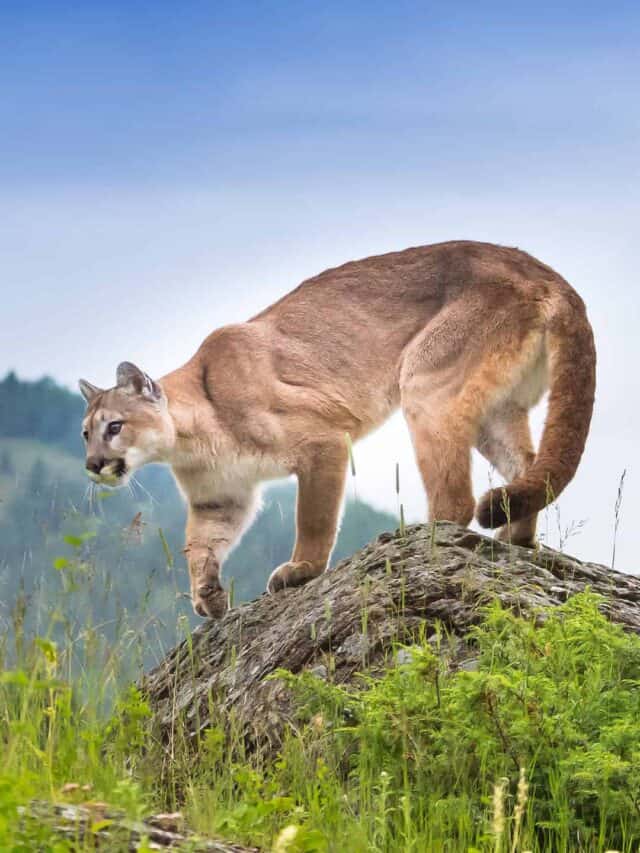
Mountain Lions
have long tails.
©Warren Metcalf/Shutterstock.com
Mountain lions, also known as pumas or cougars, are fascinating creatures that can be found throughout the Western hemisphere. These majestic animals typically weigh between 75-150 pounds and have a length of up to 8 feet from nose to tail. One striking feature of mountain lions is their extremely long tails, which can measure up to one-half of their total body length.
Their ears are round in shape, small, and set widely atop their heads – an adaptation that enables them to hear prey from great distances. Mountain lions are usually one solid color, which is normally a tan, tawny gold color that provides excellent camouflage in rocky terrains where they hunt for deer and other small mammals. However, when these cats are young, they have spots on their fur which go away as they mature.
Despite being solitary animals by nature, female mountain lions may raise litters of two or three kittens at once who stay with her for around two years before leaving to establish territories of their own. Adult mountain lions have short fur on their entire body that helps regulate temperature during hot summers or cold winters.
Although rarely seen by humans due to their elusive nature and preference for remote habitats like mountainsides or dense forests, sightings do occasionally occur near residential areas in California and other western states where development has encroached upon natural habitats. Therefore it’s essential always to keep a safe distance if you happen upon one while hiking or camping!
Bobcat

Bobcats have short tails.
©Chris Desborough/Shutterstock.com
Bobcats are fascinating creatures that can be found in various parts of the United States, including in California, where Little House on the Prairie was filmed. They are medium-sized animals, typically weighing between 15-30 pounds. One distinguishing feature of bobcats is their short-cropped tails, which never exceed more than 7 inches in length. Another noticeable characteristic is their tufted ear hairs, which make their ears look pointy and alert.
From a distance, it may appear as though bobcats have a solid coat color. However, upon closer inspection, one can see that they are actually striped and spotted with various shades of brown. These markings help them to blend into their natural surroundings and remain camouflaged from predators.
One unique physical aspect of bobcats is the ruff of fur around their cheeks. This gives them a distinctive appearance and adds to their overall charm. Additionally, they have rounded faces that give off an almost whimsical expression.
Despite being relatively small predators within the animal kingdom, bobcats possess incredible agility and strength. They often prey on smaller mammals such as rabbits or rodents but have been known to take down larger prey when necessary.
Overall, if you happen upon a bobcat during your travels in areas where they reside (such as where “Little House on the Prairie” was filmed), consider yourself lucky for this rare opportunity to observe one up close!
Red Fox
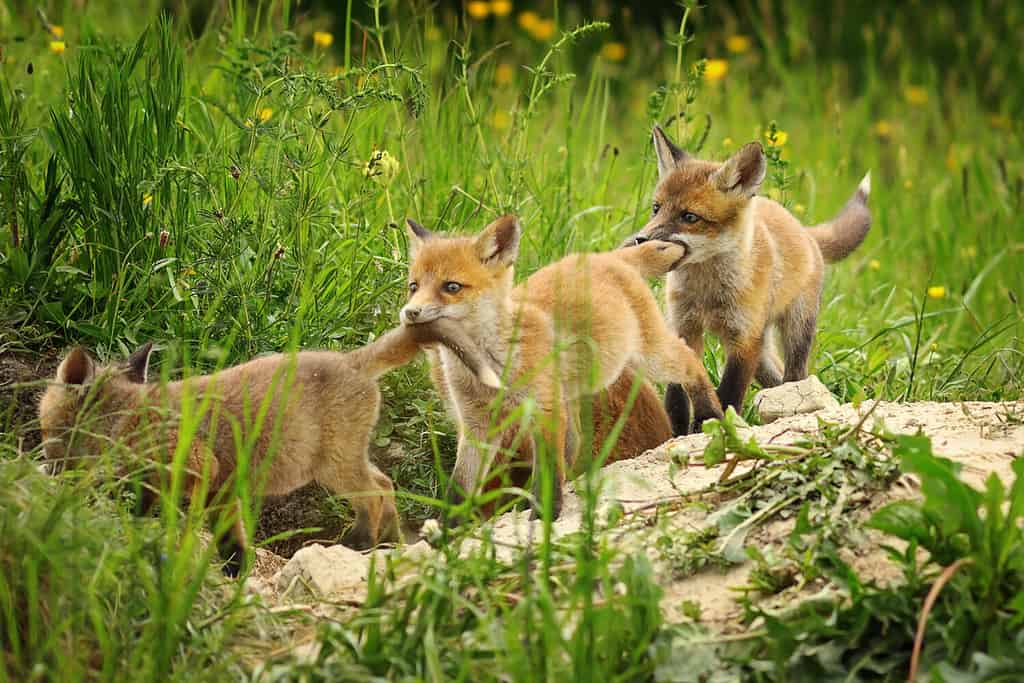
Young foxes are playful and learn to hunt through play.
©taviphoto/Shutterstock.com
A red fox is a small to medium-sized carnivorous mammal that belongs to the Canidae family. It is easily recognized by its reddish-orange fur, white underbelly, and a bushy tail with a distinctive white tip. Red foxes are found throughout North America, Europe, Asia, and northern Africa. They typically live in forests or grasslands but can also be found in suburban areas where they scavenge for food. The dry grassland area where Little House on the Prairie was filmed is ideal fox territory.
Red foxes are opportunistic predators and will eat almost anything they can find, including rodents, birds, rabbits, insects, fruits, and even small reptiles. They have excellent hearing and smell, which helps them locate prey even underground or buried beneath the snow.
In addition to their hunting skills, red foxes are known for their adaptability, as they can survive in various environments, from deserts to arctic tundras. Their population is considered stable worldwide despite being hunted for sport or fur in some regions.
Overall the red fox is a fascinating animal that has captured the attention of many nature enthusiasts due to its beauty and resilience.
Coyote

Coyotes are small members of the canine species.
©iStock.com/dmodlin01
A coyote is a wild canine species found in North and Central America. They are known for their distinctive howls, which they use to communicate with one another. Coyotes are highly adaptable animals that can thrive in a variety of habitats, including forests, grasslands, deserts, and even urban areas.
Coyotes are opportunistic predators that hunt small mammals like rodents and rabbits but will also scavenge on carrion or eat fruits and plants when necessary. They have keen senses of sight, smell, and hearing, which helps them to survive as they roam over large territories in search of food.
In some parts of the United States, where coyote populations have grown rapidly over recent years due to human development encroaching into their natural habitat, these animals pose a threat to pets, such as cats or small dogs, if left outside unattended at night. However, it is important to note that coyotes generally avoid humans whenever possible, and attacks on humans remain rare occurrences.
Overall, the coyote is an interesting animal that plays an important ecological role by helping control rodent populations while being an integral part of many Native American cultures’ mythology.
Skunk

The spotted skunk has white and black lines along its body.
©JayPierstorff/Shutterstock.com
The region of California where Little House on the Prairie was filmed is home to two distinct species of skunks: the spotted skunk and the striped skunk. While both animals are known for their characteristic black and white fur, they have several differences in appearance and behavior.
The spotted skunk (Spilogale gracilis) is a small, agile creature that can be found throughout much of North America. As its name suggests, it has distinctive spots on its coat instead of stripes like its cousin. Its body measures around 14 inches long with a tail that adds an additional 7-10 inches in length. Despite being smaller than other types of skunks, this species is known for being more aggressive when threatened and capable of performing impressive acrobatic feats like handstands or somersaults as a warning sign.
On the other hand, the striped skunk (Mephitis mephitis) is larger in size compared to the spotted variety, measuring up to 30 inches long from head to tail tip. This species has recognizable white stripes running down its back from head to tail tips, along with bushy black fur covering most parts of its body. Striped Skunks are nocturnal creatures who generally avoid confrontation unless provoked by predators or humans.
Both types enjoy living in close proximity to human settlements because they thrive on scraps left behind by people’s garbage cans or gardens’ produce leftovers while also eating insects such as beetles, grubs, etc., making them important members of urban ecosystems.
Virginia Opossum
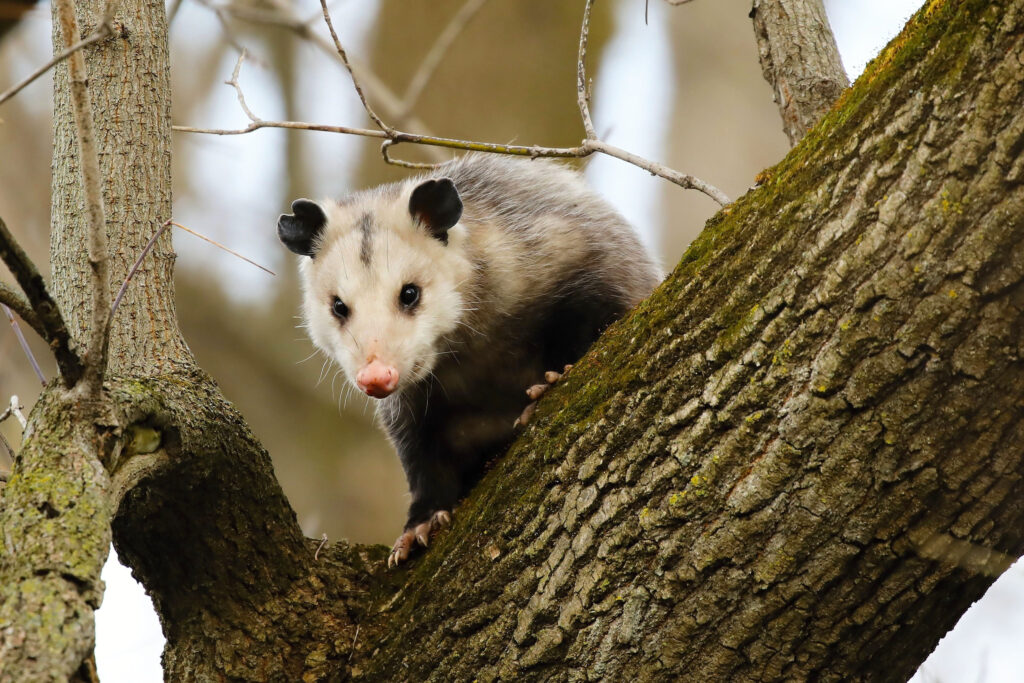
©Karel Bock/Shutterstock.com
The Virginia opossum, or Didelphis virginiana, is a marsupial native to North and South America. It is the only marsupial found in North America. Opossums are typically about the size of a house cat, with grayish-white fur and a long, hairless tail. They have sharp claws on their feet for climbing trees and are known for their ability to play dead when threatened by predators.
Opossums are omnivores and eat a wide variety of foods, including insects, fruit, nuts, small rodents, and carrion. They are also important scavengers that help keep our environment clean by eating dead animals that would otherwise attract disease-carrying pests.
Despite its somewhat unappealing appearance, the Virginia opossum plays an important role in our ecosystem. As we continue to encroach on their natural habitats through urbanization and development projects such as highways and housing developments, it’s essential that we educate ourselves about these fascinating creatures so that we can better coexist with them in the future.
Where is Big Sky Ranch Located on a Map?
Big Sky Ranch is neatly tucked away in Simi Valley, California. The location serves as a movie ranch utilized for the production of Western television series, films, and various other projects.
Here it is on a map:
Raccoon
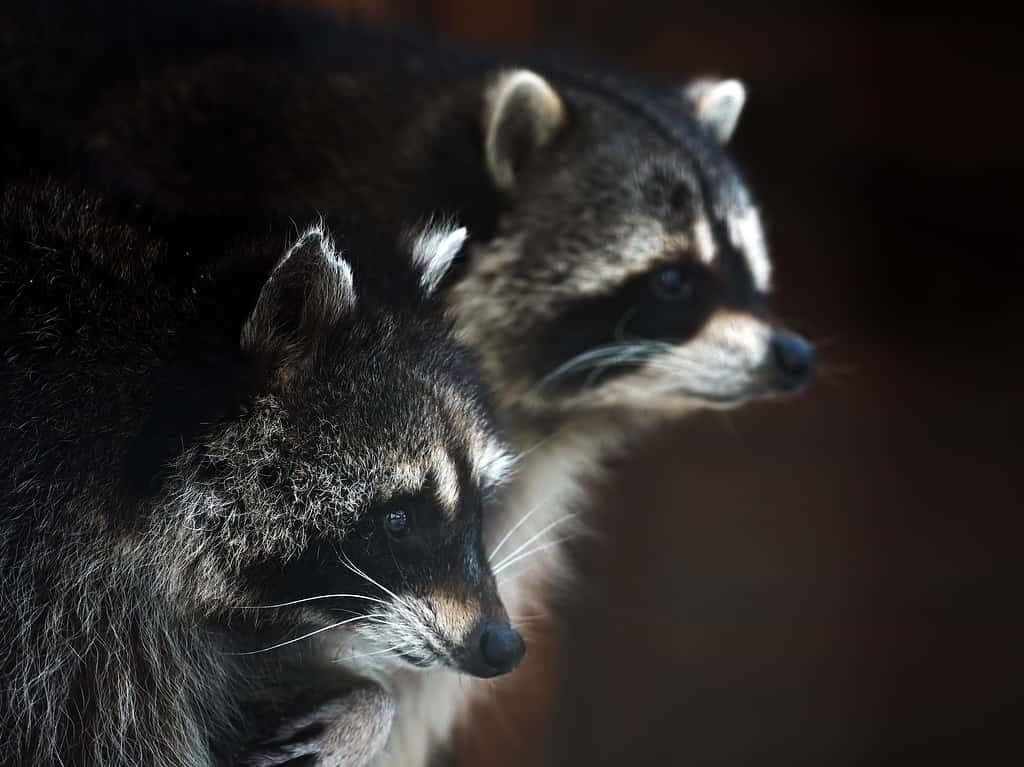
Raccoons are common animals in the area near the filming of Little House on the Prairie.
©iStock.com/SergeiM
Raccoons are a common sight in the area where Little House on the Prairie was filmed. These mammals are known for their distinctive markings, which include a black mask around their eyes and striped tails. Raccoons are primarily nocturnal animals, meaning they’re active at night and sleep during the day.
One of the most interesting things about raccoons is that they have highly adaptable diets. They’ll eat just about anything that’s available to them, from fruits and vegetables to insects and small animals like mice or rabbits. In fact, raccoons in urban areas have been known to scavenge through garbage cans for food!
Despite their cute appearance, raccoons can be dangerous if provoked or cornered. If you encounter a raccoon while exploring the prairie region where Little House on the Prairie was filmed, it’s important to keep your distance and not attempt to approach or touch them.
In addition to being fascinating creatures in their own right, raccoons also play an important role in maintaining ecosystem health by controlling populations of pests like rodents and insects. So next time you see one of these critters wandering near where Laura Ingalls Wilder once roamed, take a moment to appreciate all that they do!
The photo featured at the top of this post is © Robert Patton/Shutterstock.com
Thank you for reading! Have some feedback for us? Contact the AZ Animals editorial team.






